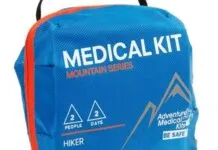Stickier Sail Tape with 3M Primer
Self-adhesive hardware-store hooks don’t stick well to bare fiberglass. Just last week we had one wash into the bilge-pump strainer on our test boat....
Dyneema Burn-Through By a Sheet
In the early 2000s, Dyneema was a breakthrough lifeline material. It is as strong as steel and much lighter, inexpensive, simple to install (at...
A Guide to Buying Your First Sailboat
So, you’re in the market for your first boat. Having just purchased my own vessel, the thrill and anxiety of the process are both...
Anchor Snubber Shock Load Test
In the past, a snubber was simply a device incorporated into the anchor rode to take the load off the windlass. We recently tested different types of snubber material, including nylon octoplait, rock-climbing rope, and rubber. Our tests were conducted as part of a long-term project on anchor-snubber selection, deployment, and care. Although there are some pre-fabricated snubbers on the market, most cruisers make their own, so this initial comparison was more generic in scope, focusing on common materials and designs.
Stitching Instead of Splicing
Splicing is king in any discussion of line termination. By carefully tucking cover and core back into the line, or weaving strands in laid line, and using patterns that have been perfected over time, we can create virtually full-strength terminations that will last the life of the line without maintenance.
In Search of the Snag-free Clew
A smooth tack can be a thing of beauty, until a sheet hangs up and ruins it. A crew member must run forward to...
Seven Lessons From a Dockside Dismasting
Valentine’s Day is not my favorite holiday. Now it will remain the anniversary of my dismasting rather than the day with romance, roses, chocolates...
Keeping Canvas in Tip-top Shape
Canvas dodgers and biminis are the hallmark of a cruising yacht, but they arent cheap to come by. We wanted to find the best way to protect the investment and get the most life out of the canvas. Sunbrella makers recommend that routine maintenance include frequent freshwater rinsing, plus spot cleaning, and applying a treatment to restore the fabrics repellency. In this article, we take a look at treatments designed to keep on-board canvas water repellent and looking its best. We tested seven: Aquatech, Marykate, 3M, 303 Products, NikWax, Star brite, and Iosso.
SNADs: Snaps Without Screws
No one likes drilling holes in their boat, and to drill holes for a simple snap seems like overkill. I love snaps for window...
Rope Clutches Tighten Their Grip
Like the character Jaws in the old James Bond movie, rope clutches grab hold with a ferocious bite. This month we take another look at these toothy devices and how changes in materials and design are reshaping the art of clamping down. Since our last test (see Practical Sailor March 2009 online), several manufacturers have improved their existing designs to grip better than ever. Others have unveiled completely new approaches.


















































